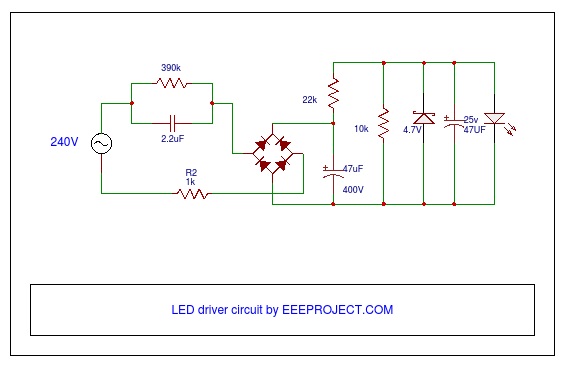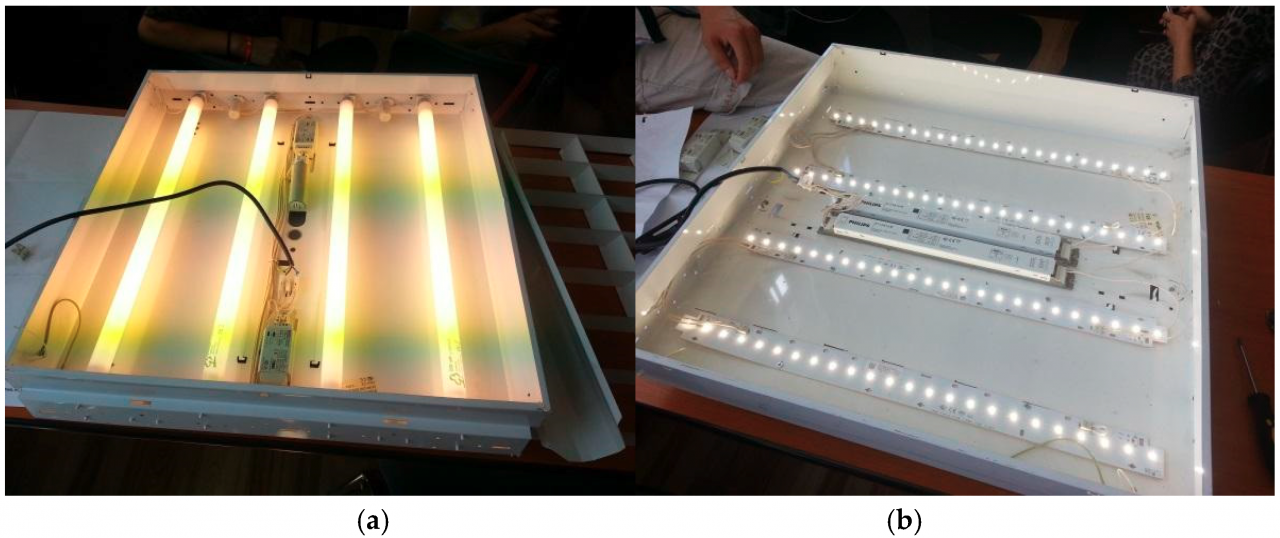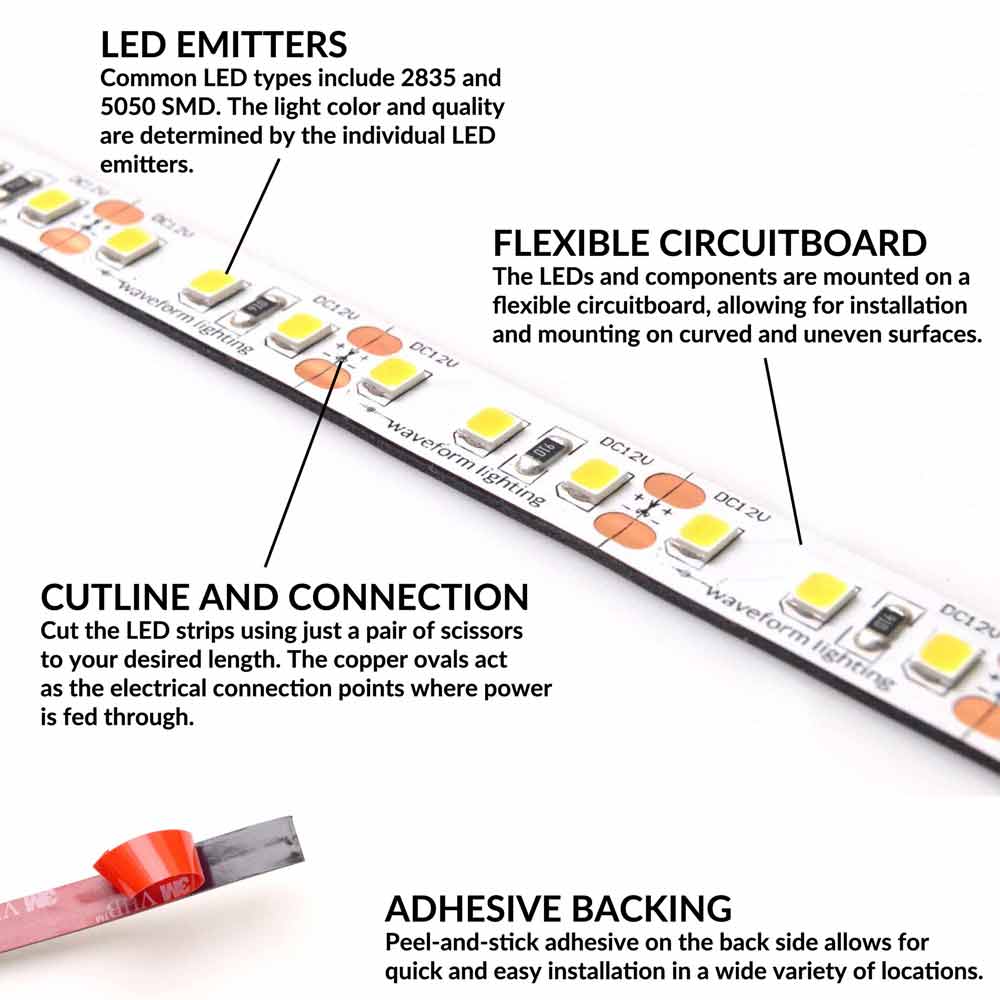
In this month’s article, we address factors that influence how an LED is driven, including different driver techniques and why they are preferred for a variety of lighting applications. We look at the effects of different loads, as well as control options to drive LED loads effectively.
Constant Current or Constant Voltage?
LEDs typically require a constant current rather than a constant voltage to operate. The LEDs themselves present a constant voltage drop across the line (although the actual value of the voltage drop varies between approximately 3.2 V and 3.0 V depending on LED type and temperature).
Constant current drivers (CC) deliver a constant current to the load across a range of LED voltage conditions. For bulbs, the driver is typically designed to deliver constant current across a narrow LED voltage range (perhaps nominal voltage +/- 10 percent). These drivers are very effective in tightly specified designs (such as LED bulbs), making them application specific. However, this approach requires the design of a dedicated CC power supply.
Another approach is to use a driver that can deliver a constant voltage (CV) across a wide current range. Many CV drivers are fully isolated, simplifying the design process and removing much of the burden of meeting safety approvals, it also facilitates scalability by adding more parallel LED strings.
In order to maintain a constant current through the LED string with a CV output (such is often delivered from ballast-type drivers), a series resistor is added, the value for which is determined by the equation:
where VDC is the nominal output voltage from the power supply, VLED is the voltage drop across the whole LED string and ILED is the desired LED forward current.
This is a very simple relationship, but the effect of circuit tolerances becomes significant. Output voltage ripple and the voltage tolerance of the driver result in dramatically increased effects in LED circuits compared to similar low-voltage drivers used for more conventional power applications. For example, although a voltage variation of +/- 5 percent is not large when considering the output voltage, in an LED driver with a load resistor, ILED varies according to the amount of change in the difference between driver voltage and the LED voltage – the effect on output current is magnified.
In order to achieve an acceptable design, the engineer must trade off power dissipation in the resistor against output current variation.
The human eye is relatively insensitive to light intensity and adjacent drivers subject to similar input voltage and ambient conditions tend to track each other (the difference between drivers in the same conditions will be less than the worst case described above). Therefore, in fixed or consistent conditions the effect of the tolerance in a CV LED driver may not be a major concern, provided that output voltage can be controlled within a relatively narrow range.
Primary and Secondary Control – Performance vs. Cost
To drive an LED load effectively with a CV driver, output regulation must be well controlled. Secondary side controllers that directly measure output voltage and deliver correcting information to the primary side switching stage will tightly control the output but will also add cost and shorten product lifetime (the opto-isolator, which is used to transfer information from secondary to primary, degrades over time).
In contrast, primary-side controllers do not directly monitor the output stage. Instead, they infer output performance using indirect means. A challenge with this approach is that component variation can affect output regulation. Leakage inductance in the isolation transformer can easily vary by ±15 percent in production, which will significantly degrade the output tolerance of a design. In order to improve accuracy, primary side-controllers (such as LYTSwitch-2 LED driver ICs) use correction algorithms to compensate for inductance variation as well as line and load effects. Thus, they can achieve output regulation of better than 5 percent across line and load.
Figure 1. Load and line regulation in voltage mode for LYTSwitch-2 LED driver ICs.
The accuracy of primary side controllers with good line/load regulation coupled with the lower system cost and higher reliability of this approach results in wide utilizationfor low power drivers.
Combined CV/CC Drivers
By combining different control modes, it is possible for an LED driver to have both constant current across a variable voltage and constant voltage across a variable current. The benefit of this technology is that the same control IC and power supply circuitry can be used for a wide range of applications and load conditions. The CC mode allows the output to deliver constant current across a wide output voltage swing (typically 2:1 or better) as well as a wide output voltage range.
Figure 2. Combining different control modes – LYTSwitch-2 LED driver IC with constant current across a variable voltage and constant voltage across a variable current.
Using On-Off control for CV operation and Variable Frequency Control for CC portions of the regulation curve results in a product that can support both CC direct LED driver and CV applications.
This approach is particularly useful for power supply manufacturers who wish to support a wide range of customer applications with a limited range of power supplies.
As we have discussed, an LED requires constant current, and can be driven using different power supply types. So far we have considered the LED load to be a string of ideal diodes which all behave the same. In the next article we will consider the effects of variations in LED characteristics and how they affect efficacy, output ripple and other circuit performance metrics; this will clearly demonstrate that it is not possible to determine circuit performance without a clear understanding of the nature of the LEDs which will be used.



